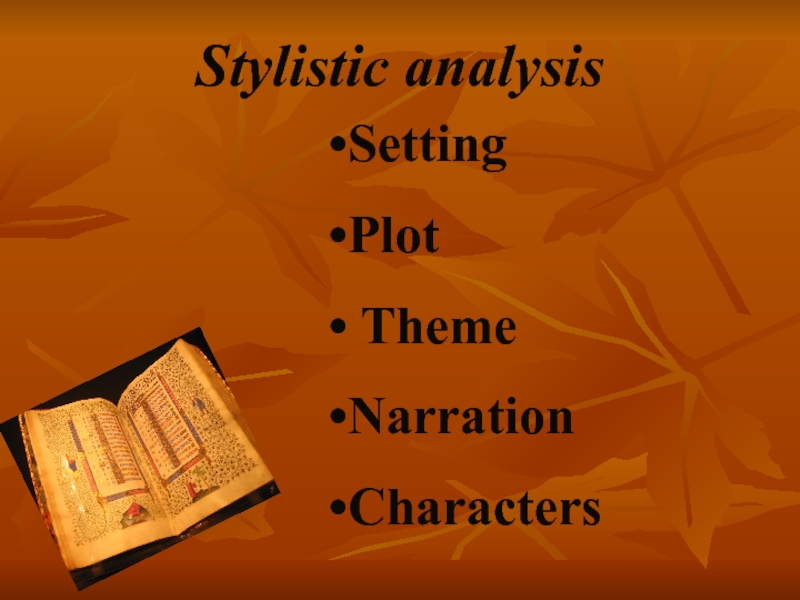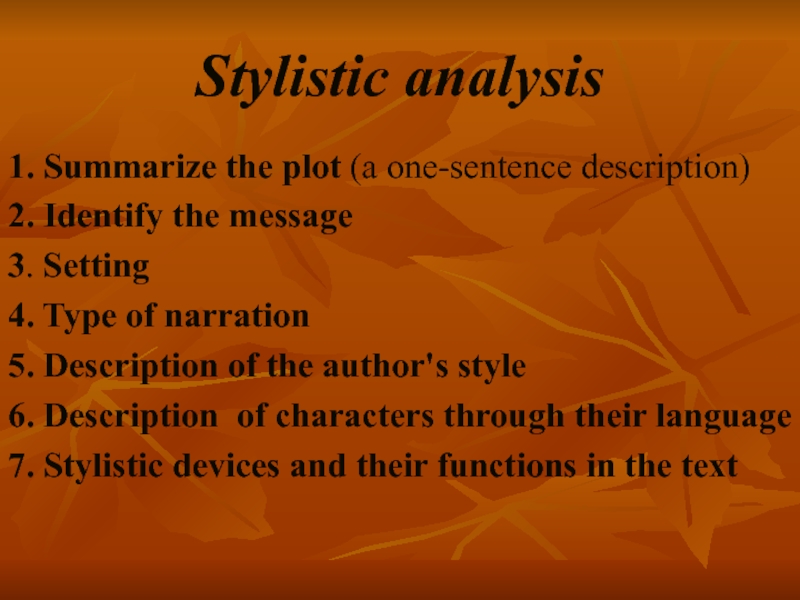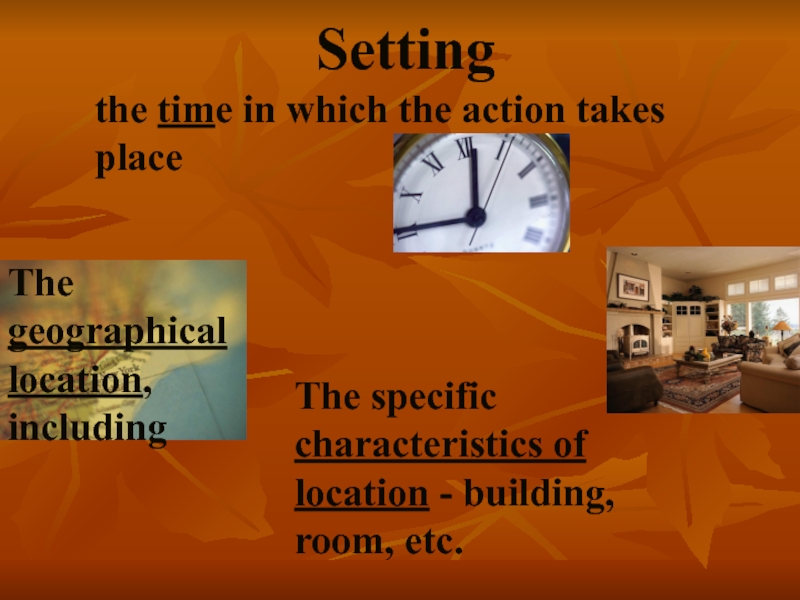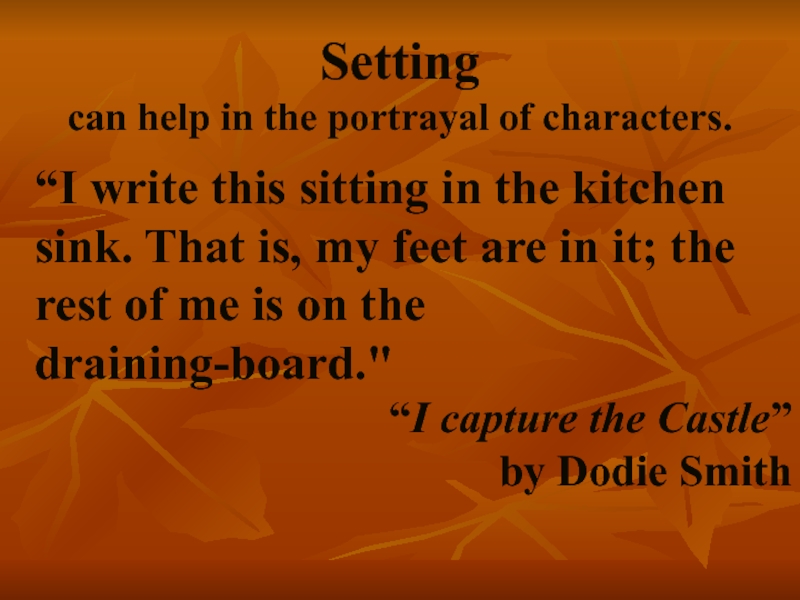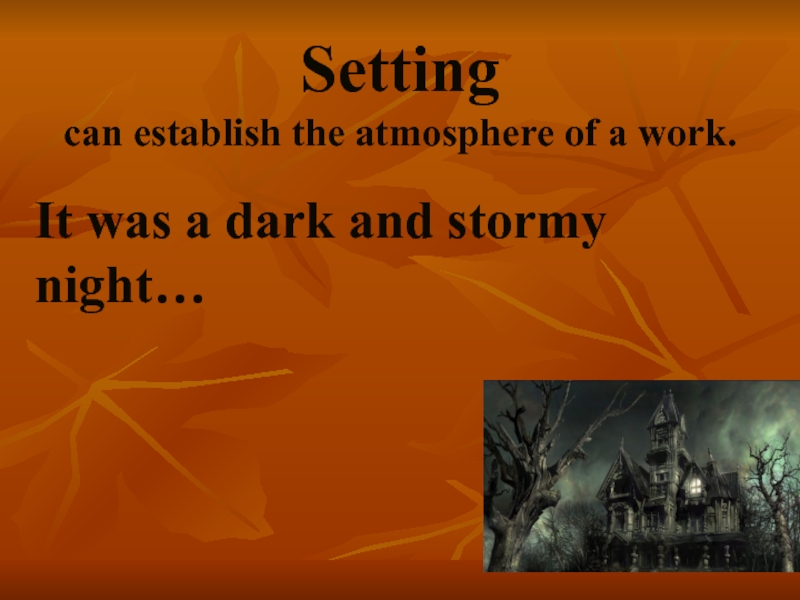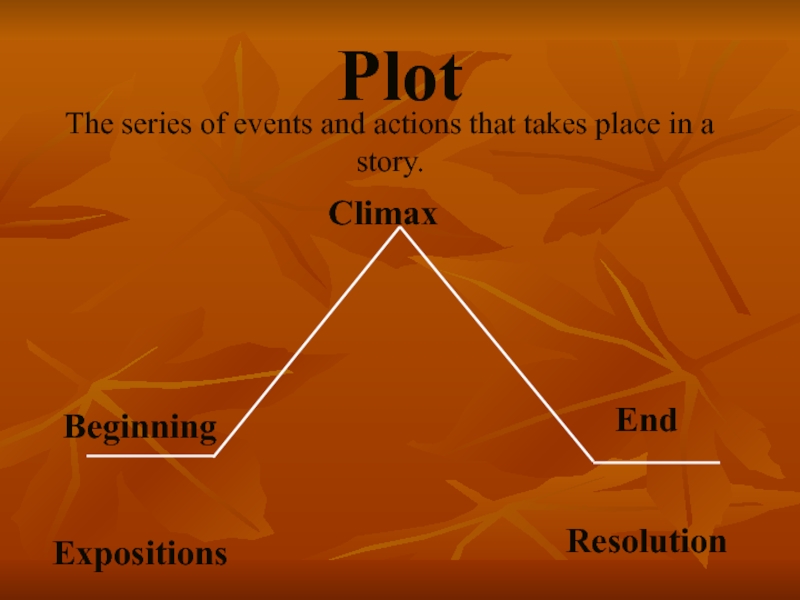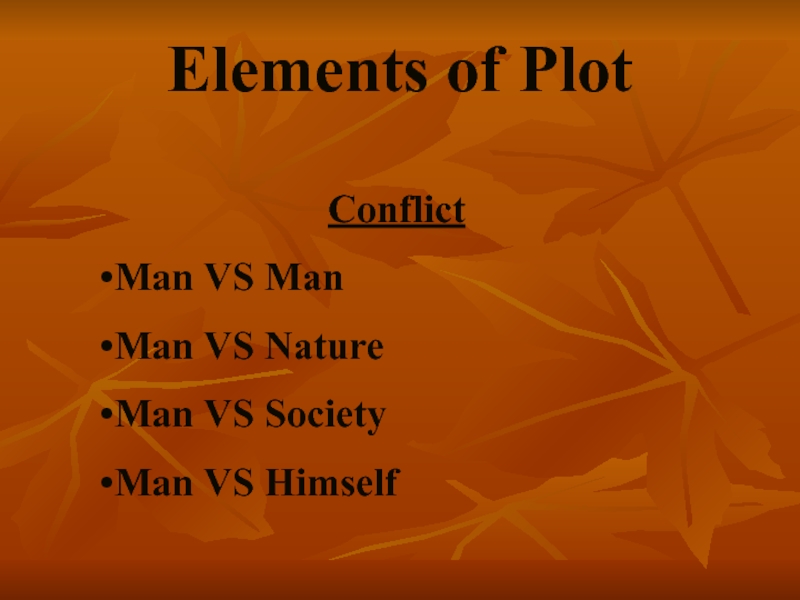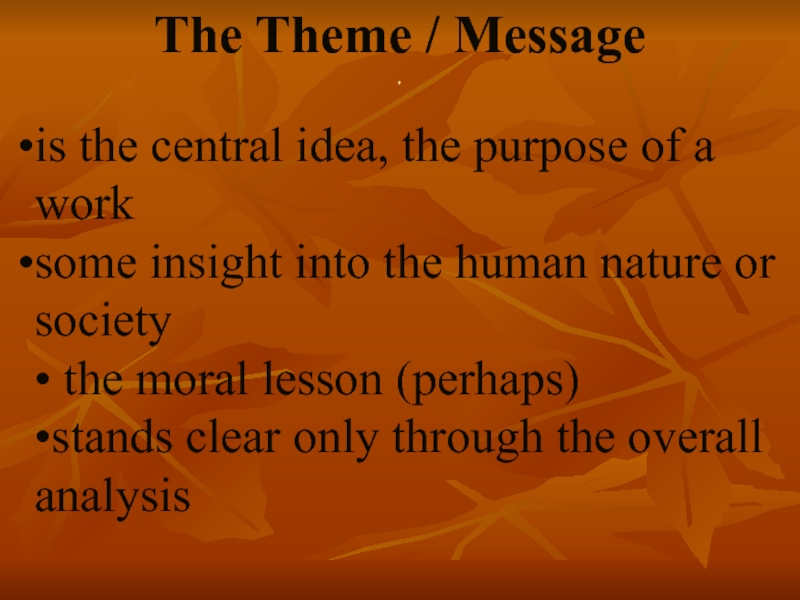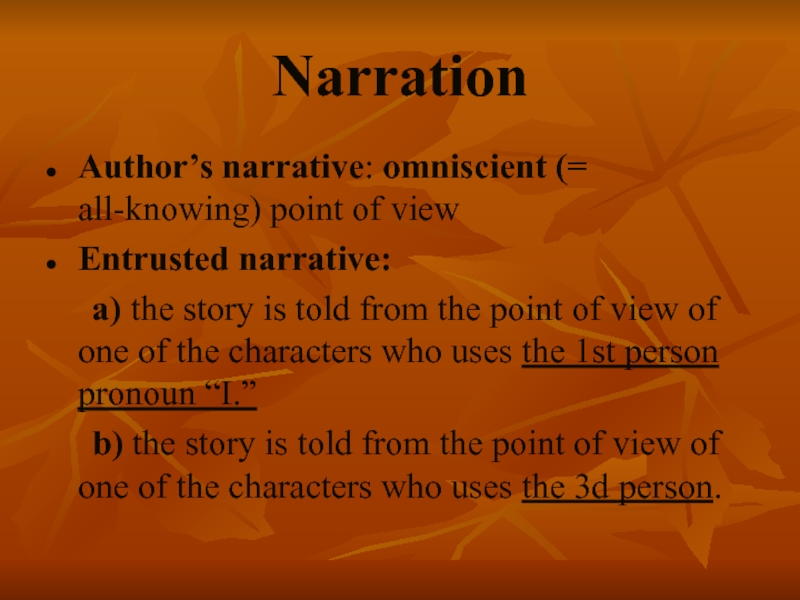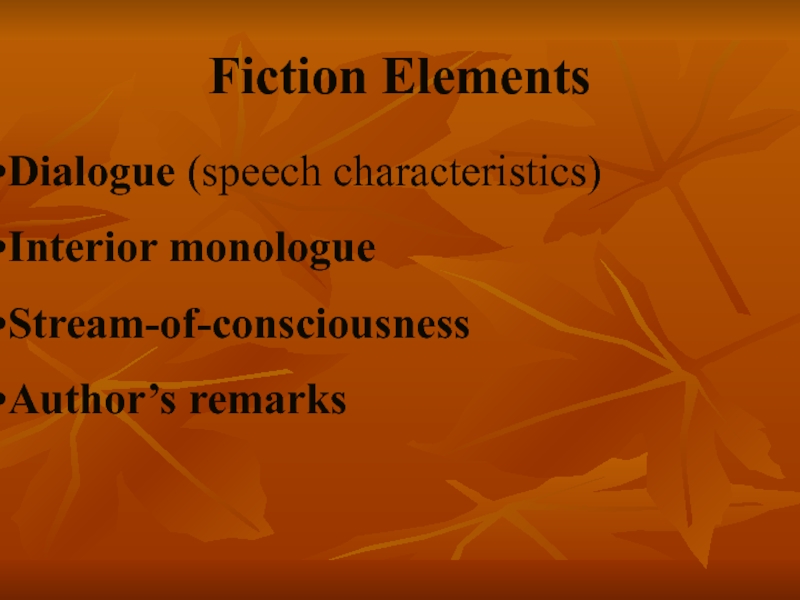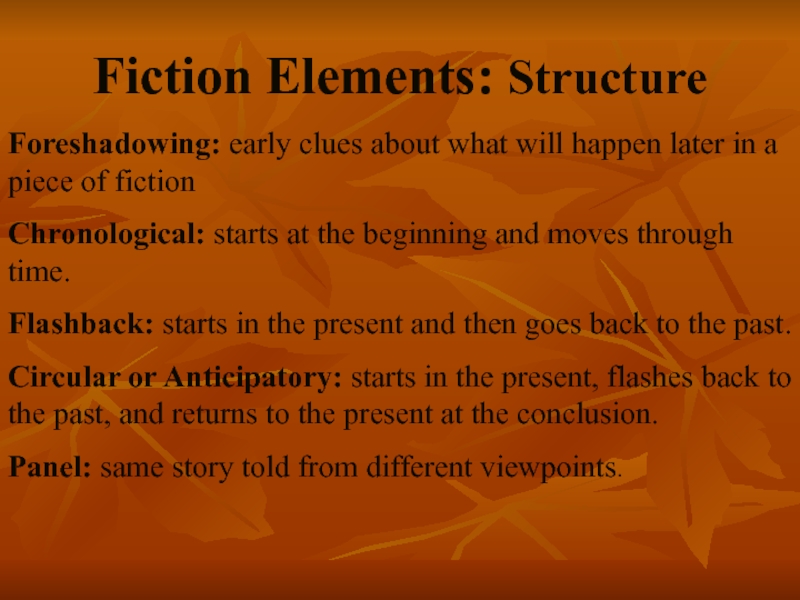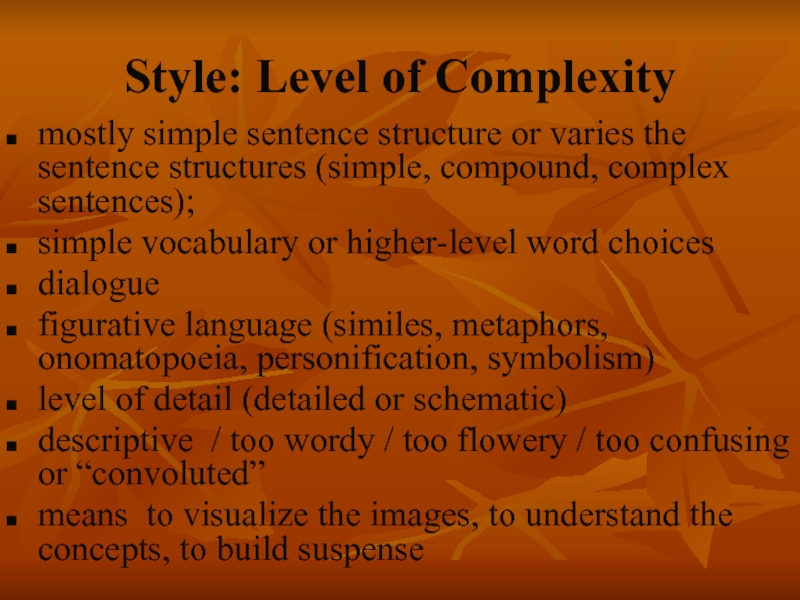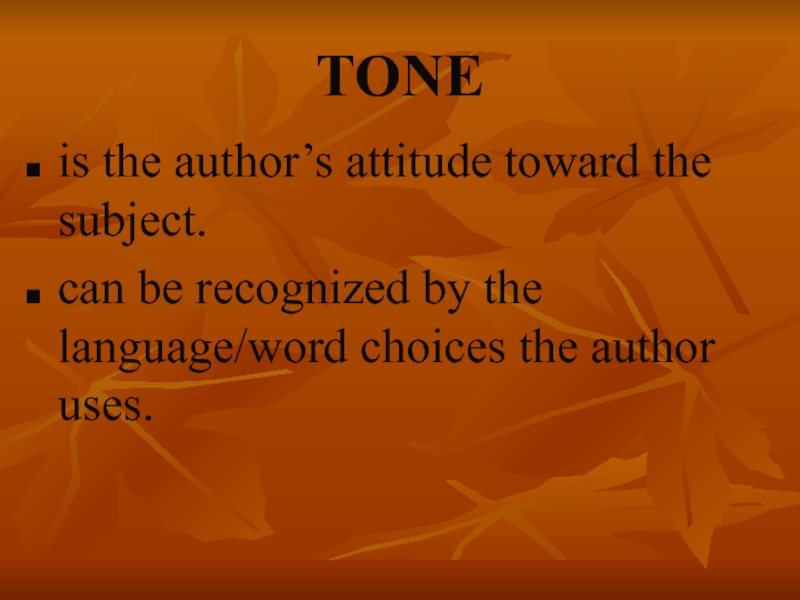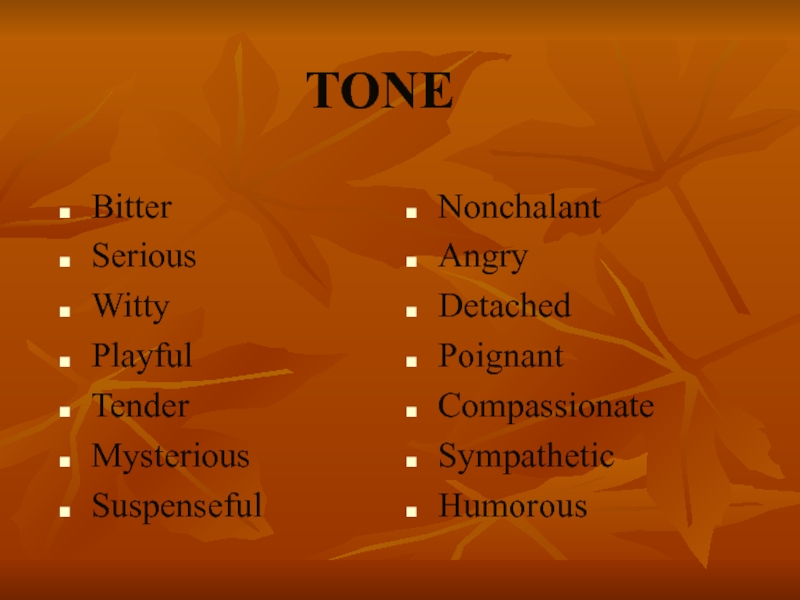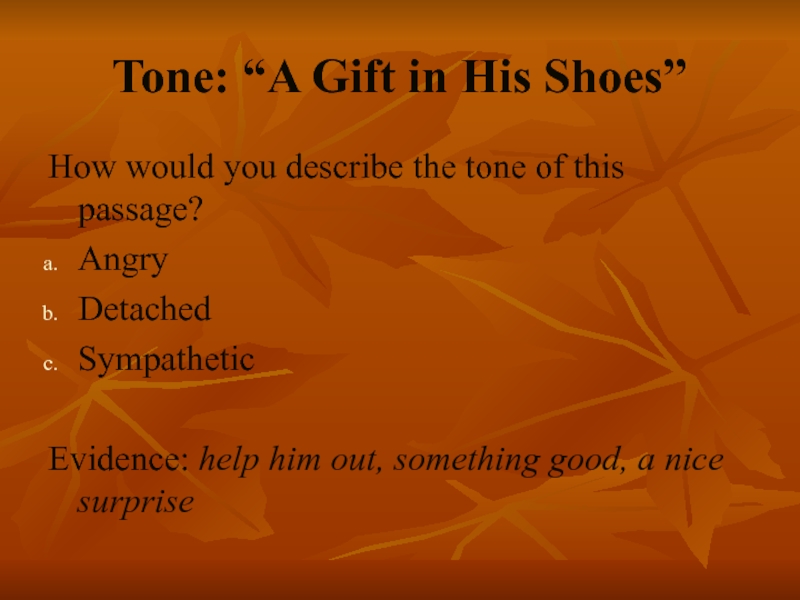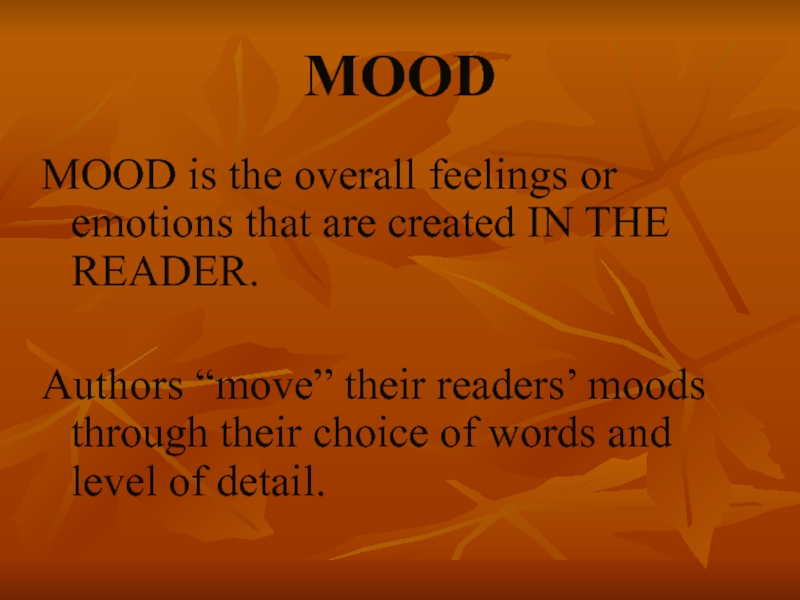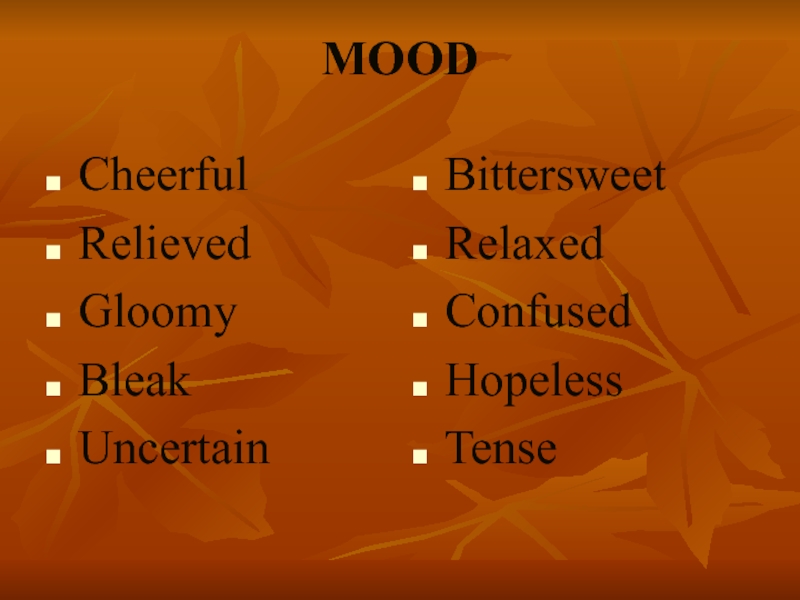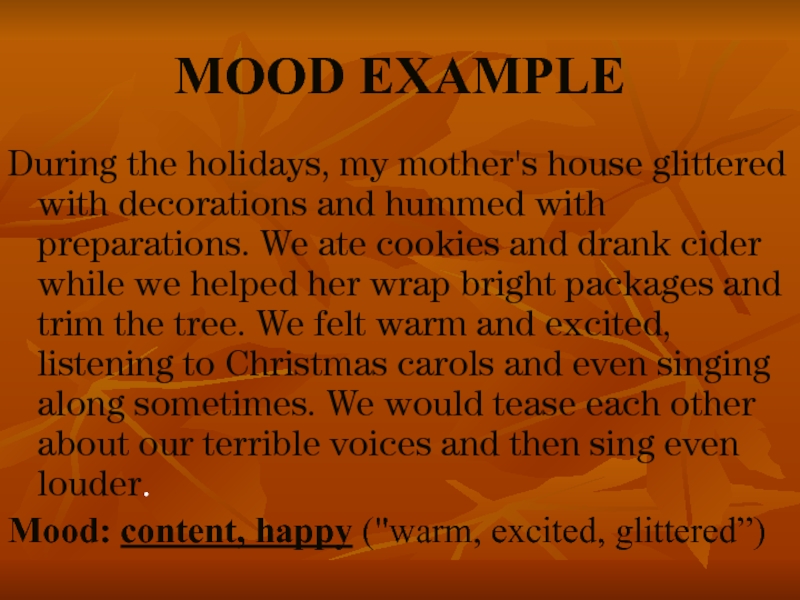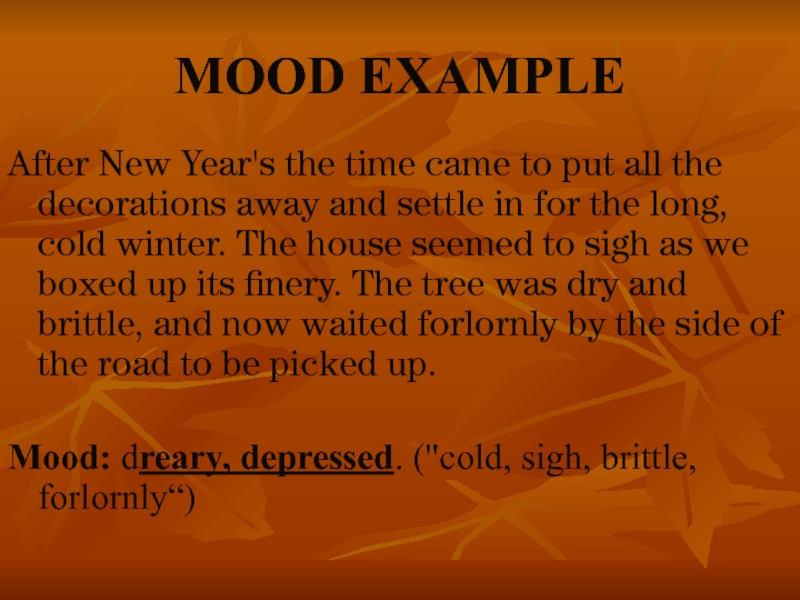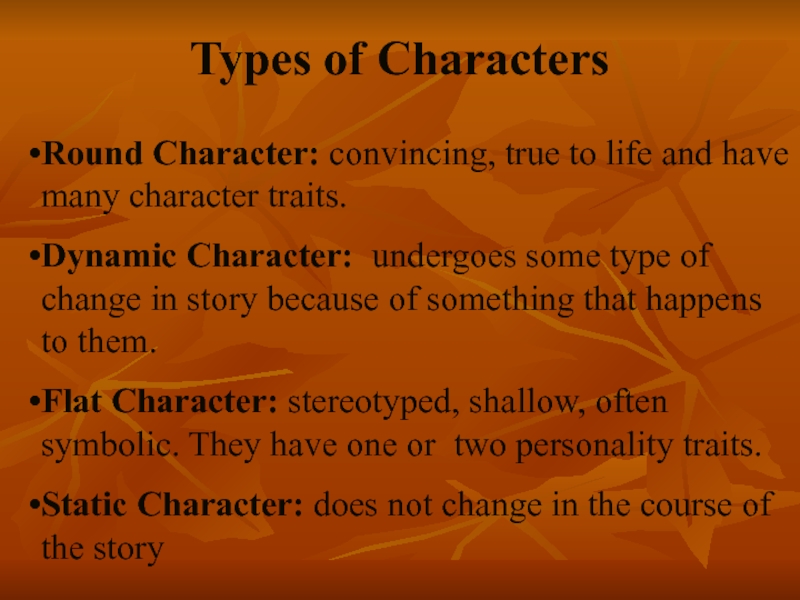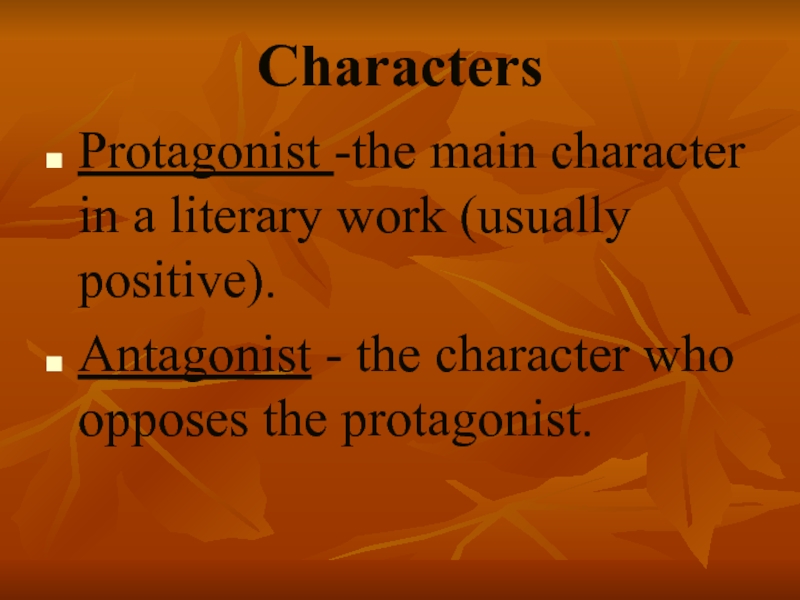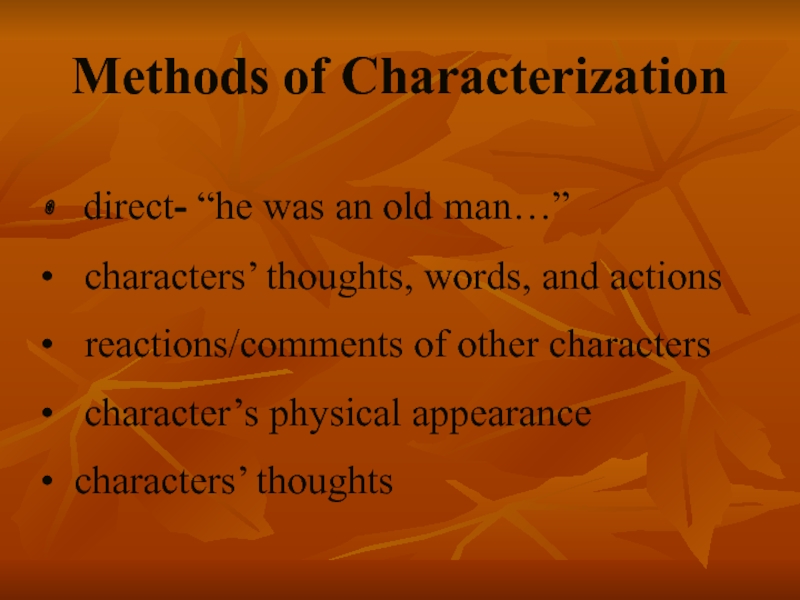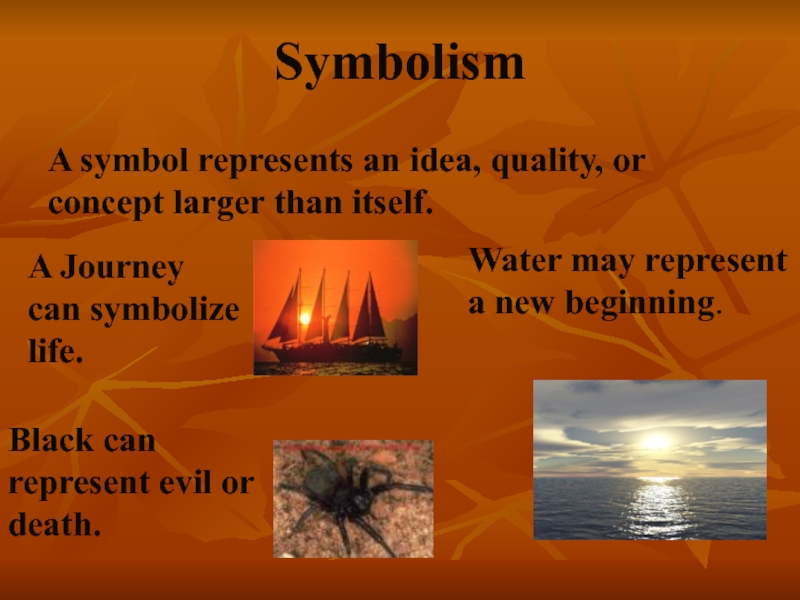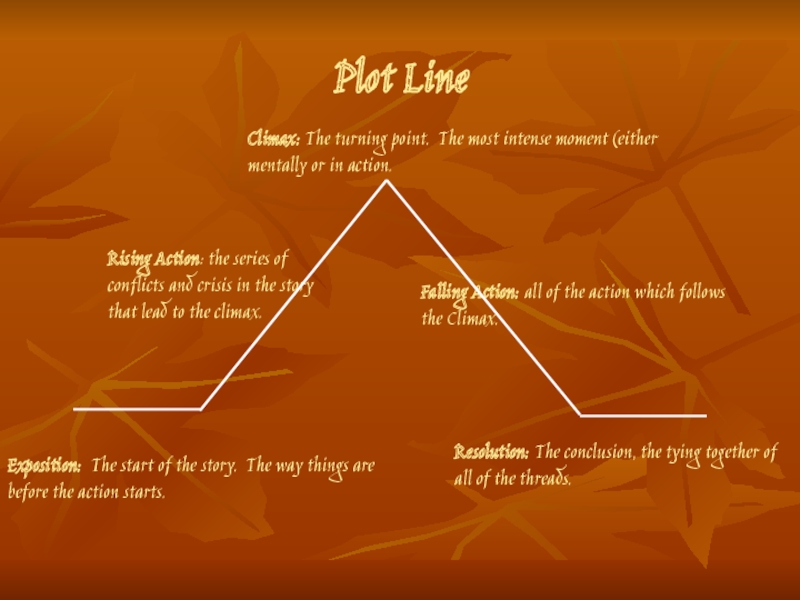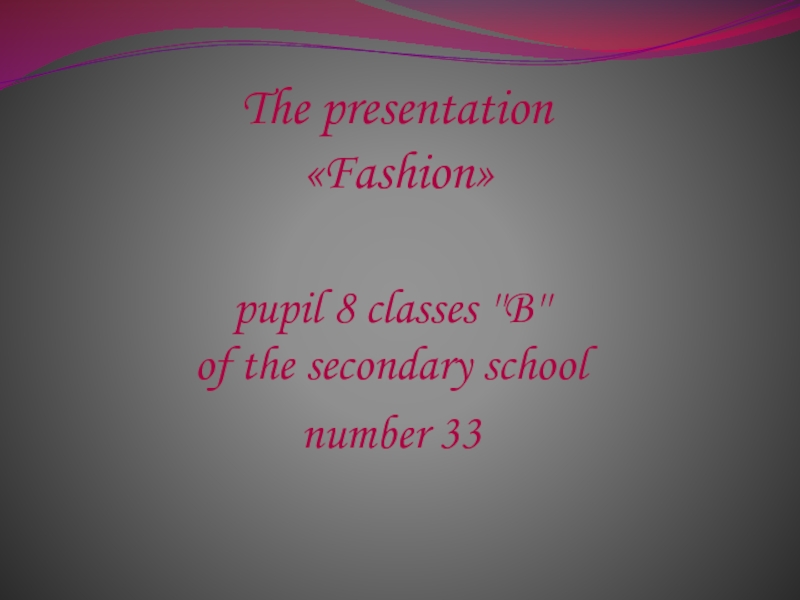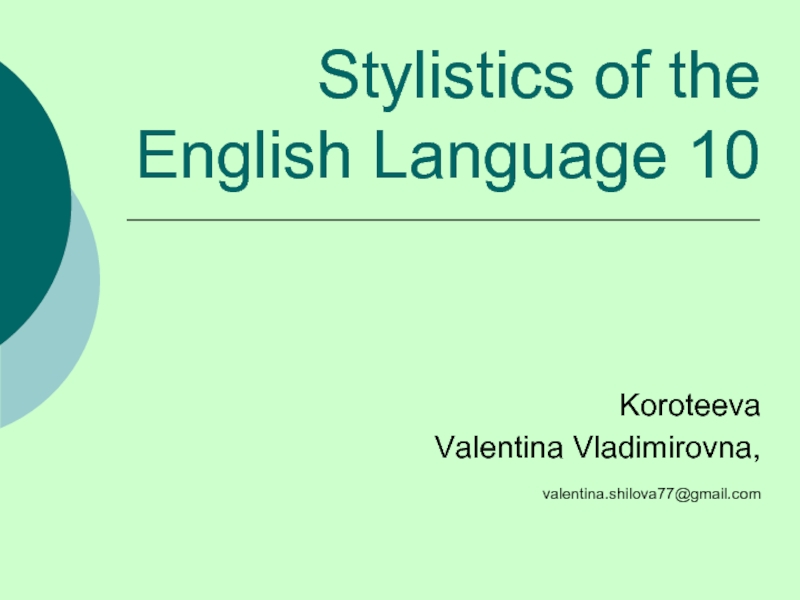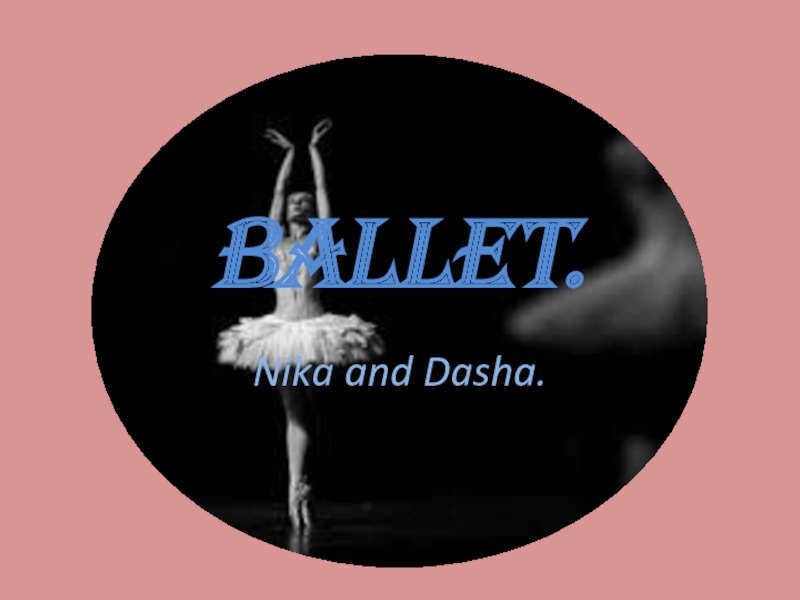- Главная
- Разное
- Дизайн
- Бизнес и предпринимательство
- Аналитика
- Образование
- Развлечения
- Красота и здоровье
- Финансы
- Государство
- Путешествия
- Спорт
- Недвижимость
- Армия
- Графика
- Культурология
- Еда и кулинария
- Лингвистика
- Английский язык
- Астрономия
- Алгебра
- Биология
- География
- Детские презентации
- Информатика
- История
- Литература
- Маркетинг
- Математика
- Медицина
- Менеджмент
- Музыка
- МХК
- Немецкий язык
- ОБЖ
- Обществознание
- Окружающий мир
- Педагогика
- Русский язык
- Технология
- Физика
- Философия
- Химия
- Шаблоны, картинки для презентаций
- Экология
- Экономика
- Юриспруденция
Stylistic analysis презентация
Содержание
- 1. Stylistic analysis
- 2. Stylistic analysis 1. Summarize the plot (a
- 3. Setting the time in which the
- 4. Setting can help in the portrayal of
- 5. Setting can establish the atmosphere of a
- 6. Plot The series of events and actions
- 7. Elements of Plot Conflict Man VS Man
- 8. The Theme / Message .
- 9. Narration Author’s narrative: omniscient (= all-knowing) point
- 10. Fiction Elements Dialogue (speech characteristics) Interior monologue Stream-of-consciousness Author’s remarks
- 11. Fiction Elements: Structure Foreshadowing: early clues about
- 12. Style: Level of Complexity mostly simple sentence
- 13. TONE is the author’s attitude toward the
- 14. TONE Bitter Serious Witty Playful Tender
- 15. Tone : “A Gift in His Shoes”
- 16. Tone: “A Gift in His Shoes” How
- 17. MOOD MOOD is the overall feelings or
- 18. MOOD Cheerful Relieved Gloomy Bleak Uncertain Bittersweet Relaxed Confused Hopeless Tense
- 19. MOOD EXAMPLE During the holidays, my mother's
- 20. MOOD EXAMPLE After New Year's the time
- 21. Types of Characters Round Character: convincing, true
- 22. Characters Protagonist -the main character in a
- 23. Methods of Characterization direct- “he was
- 24. Symbolism A symbol represents an idea, quality,
- 25. Plot Line Exposition: The start of the
Слайд 2Stylistic analysis
1. Summarize the plot (a one-sentence description)
2. Identify the
3. Setting
4. Type of narration
5. Description of the author's style
6. Description of characters through their language
7. Stylistic devices and their functions in the text
Слайд 3Setting
the time in which the action takes place
The specific characteristics of
The geographical location, including
Слайд 4Setting
can help in the portrayal of characters.
“I write this sitting in
“I capture the Castle”
by Dodie Smith
Слайд 6Plot
The series of events and actions that takes place in a
Beginning
Expositions
Climax
End
Resolution
Слайд 8The Theme / Message
.
is the central idea, the purpose of a
some insight into the human nature or society
• the moral lesson (perhaps)
•stands clear only through the overall analysis
Слайд 9Narration
Author’s narrative: omniscient (= all-knowing) point of view
Entrusted narrative:
b) the story is told from the point of view of one of the characters who uses the 3d person.
Слайд 10Fiction Elements
Dialogue (speech characteristics)
Interior monologue
Stream-of-consciousness
Author’s remarks
Слайд 11Fiction Elements: Structure
Foreshadowing: early clues about what will happen later in
Chronological: starts at the beginning and moves through time.
Flashback: starts in the present and then goes back to the past.
Circular or Anticipatory: starts in the present, flashes back to the past, and returns to the present at the conclusion.
Panel: same story told from different viewpoints.
Слайд 12Style: Level of Complexity
mostly simple sentence structure or varies the sentence
simple vocabulary or higher-level word choices
dialogue
figurative language (similes, metaphors, onomatopoeia, personification, symbolism)
level of detail (detailed or schematic)
descriptive / too wordy / too flowery / too confusing or “convoluted”
means to visualize the images, to understand the concepts, to build suspense
Слайд 13TONE
is the author’s attitude toward the subject.
can be recognized by
Слайд 14TONE
Bitter
Serious
Witty
Playful
Tender
Mysterious
Suspenseful
Nonchalant
Angry
Detached
Poignant
Compassionate
Sympathetic
Humorous
Слайд 15Tone : “A Gift in His Shoes”
Donovan and Larry were early
Слайд 16Tone: “A Gift in His Shoes”
How would you describe the tone
Angry
Detached
Sympathetic
Evidence: help him out, something good, a nice surprise
Слайд 17MOOD
MOOD is the overall feelings or emotions that are created IN
Authors “move” their readers’ moods through their choice of words and level of detail.
Слайд 19MOOD EXAMPLE
During the holidays, my mother's house glittered with decorations and
Mood: content, happy ("warm, excited, glittered”)
Слайд 20MOOD EXAMPLE
After New Year's the time came to put all the
Mood: dreary, depressed. ("cold, sigh, brittle, forlornly“)
Слайд 21Types of Characters
Round Character: convincing, true to life and have many
Dynamic Character: undergoes some type of change in story because of something that happens to them.
Flat Character: stereotyped, shallow, often symbolic. They have one or two personality traits.
Static Character: does not change in the course of the story
Слайд 22Characters
Protagonist -the main character in a literary work (usually positive).
Antagonist -
Слайд 23Methods of Characterization
direct- “he was an old man…”
characters’ thoughts,
reactions/comments of other characters
character’s physical appearance
characters’ thoughts
Слайд 24Symbolism
A symbol represents an idea, quality, or concept larger than itself.
A
Black can represent evil or death.
Water may represent a new beginning.
Слайд 25Plot Line
Exposition: The start of the story. The way things are
Rising Action: the series of conflicts and crisis in the story that lead to the climax.
Climax: The turning point. The most intense moment (either mentally or in action.
Falling Action: all of the action which follows the Climax.
Resolution: The conclusion, the tying together of all of the threads.
